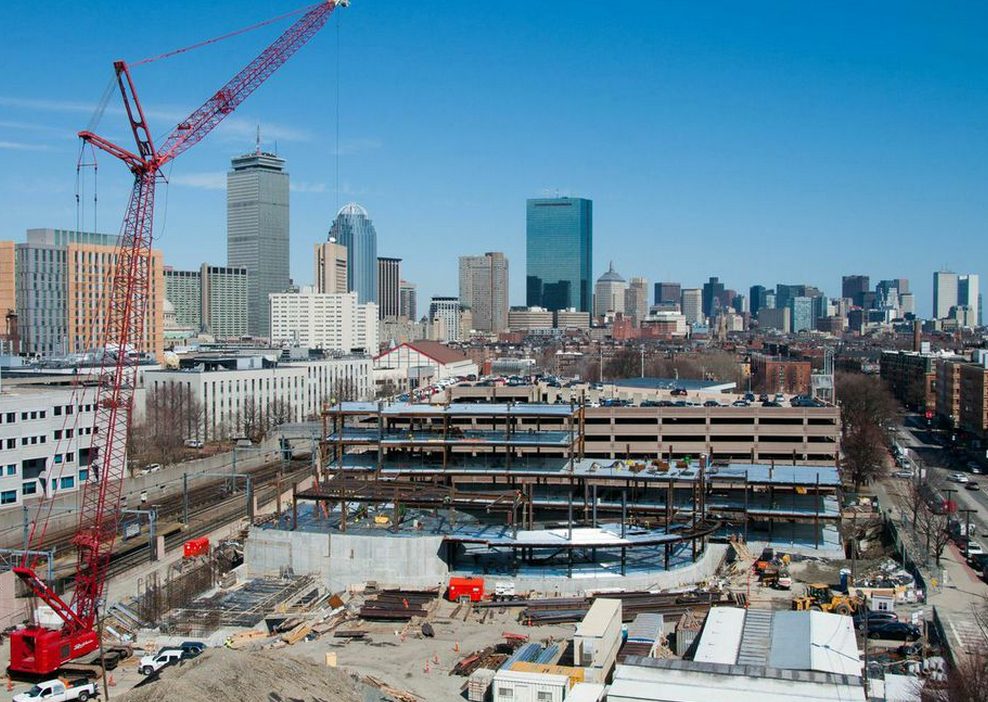By Vanessa Nason, news correspondent
Launching Northeastern into a new realm of research and accommodating students’ growing interest in science- and engineering-related fields, the university’s new interdisciplinary science and engineering complex (ISEC) is slated for completion in fall of 2016. It will be the first development dedicated to private research in Roxbury.
“We’ve been working on this for a number of years,” Stephen Director, provost and senior vice president for academic affairs, said. “The research and educational programs in the general area of sciences, in particular the life sciences and engineering, have been growing rapidly on this campus, and we have not really added any new facilities – new buildings in particular – to support this activity, which I want to emphasize not only is helpful for faculty and graduate students but for the undergraduate students that are also engaged in many of these projects as well.”
The new facility will be constructed in the Columbus Avenue parking lot and will include wet and dry lab facilities and undergraduate teaching labs and classrooms, as well as offices for faculty and graduate students. It will also add 220,000 square feet of space.
“I think a new engineering building is an investment in Northeastern’s future,” freshman computer engineering major Victoria Barranco said. “I’m always hearing about ground breaking research going on in our labs, and the new building would offer a whole new host of opportunities for students to participate in research.”
Northeastern has recently seen a large uptake in the amount of research generated, according to Director.
“We have, over the last four or five years, doubled the amount of research that we’ve been doing,” he said.
This amount is measured by the money generated from external sponsors donating to the research. With this extreme growth, new facilities became necessary.
“There has been a huge need for sufficient infrastructure support, especially research laboratories and teaching space,” Mansoor Amiji, distinguished professor and chair of the Department of Pharmaceutical Sciences, said.
While there will be many renovations across campus as part of Northeastern’s Institutional Master Plan (IMP), Director notes that most construction over the past few years has been focused on dormitories and other facilities not directly related to research.
“The buildings that were renovated were not necessarily designed to support the state-of-the-art research that we’re engaged in now,” Director said. “So this building is being built to accommodate our growing research program in these areas: the life sciences, computer sciences, engineering and some of the other basic sciences as well, and provide the much-needed space.”
According to Director, Northeastern is expected to double the amount of research it conducts again in another five years. This project supports that future, as the building’s design is suited for greater interaction and is focused on increasing research output. The ISEC represents a $225 million investment by Northeastern.
The IMP, developed over the past two years as a collaboration among faculty, staff, students and the surrounding communities, concentrates on growing NU’s campuses both in Boston and on the Seattle and Charlotte campuses. The IMP was approved by the Boston Redevelopment Authority in November of last year.
The LEED-certified building, designed by architectural firm Payette, also includes a pedestrian bridge across the MBTA Orange Line.
“There will also be a cafe in there, which will expand eating facilities,” Director said of the ISEC. “There’s a great landscaping plan that will provide wonderful outdoor interaction spaces for the entire campus and also provide, because of the way we designed the atrium and the auditorium – which is a much needed facility for the campus as a whole – but will also accommodate campuswide events.”
Nadine Aubry, dean of the College of Engineering, sees this building as the beginning of new opportunity for students and the university as a whole.
“I am tremendously excited about the ISEC complex, which will serve to convene our engineering students and researchers alongside scientists from other colleges in a world-class facility,” Aubry said in statement to The News. “And in doing so, enable our continued innovation in interdisciplinary research addressing grand challenges today’s world faces.”
Photo by Brian Bae









